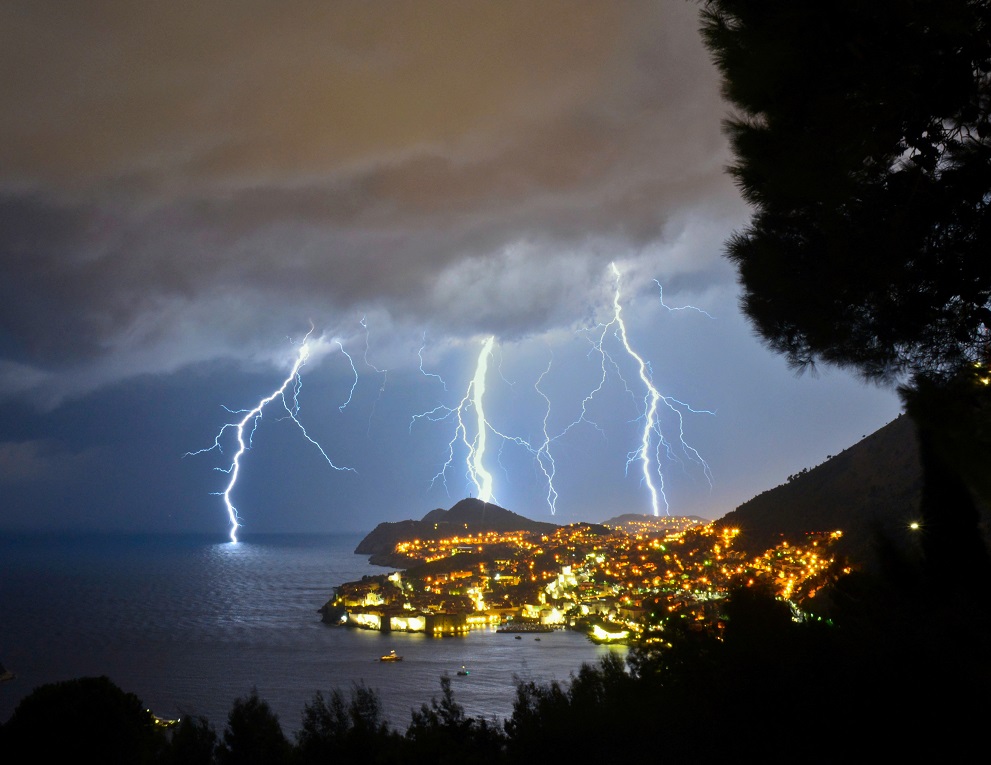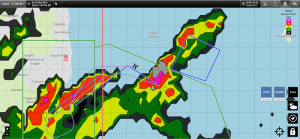CLS Iridium RUDICS service allows French scientists to explore the origin of thunderstorms
- February 7, 2019
- Category: Testimonies

With global warming, extreme weather events are increasingly common. Thunder storms are some of the most unpredictable meteorological phenomena. How they form and where they will go is still not fully understood. Within the EXAEDRE project, French scientists use CLS Iridium RUDICS service to transfer observations of thunderstorms from the sky to the ground in real-time.
Understanding extreme weather
In a project funded by the Agence Nationale de Recherche, a group of scientists from the French Research Agency (CNRS) and the CNRM of the French Meteorological Agency (Météo France), have taken the study of thunderstorms one step further. For four weeks between September and October 2018, these scientists flew the SAFIRE research jet into thunderheads forming over Corsica. The objective? To make direct observations of what happens in the atmosphere during a thunderstorm in order to improve forecasting.
More than 150 parameters were measured, including wind speed and direction. These measurements were then transferred to a team of scientists on the ground in real-time for comparison with observations provided by ground radar.
Providing seamless communication for the SAFIRE mission

How did the scientists transfer data from the airplane to the ground and communicate in real-time? With PLANET, a collaborative mission management service, designed by ATMOSPHERE. This interface provides means to exchange information in real-time among geographically distributed users, including airplanes. The communication link with the aircraft uses an Iridium Core 9523 transferred via an Iridium RUDICS connection provided by CLS.
Real-time data transfer is key
In-flight connectivity via CLS Iridium RUDICS has been routinely used on SAFIRE missions since 2012. Live radar and lightning strike information can be received in real-time, and atmospheric profiles obtained from the Falcon 20-launched drop sondes can be uploaded directly to the Global Telecommunication System of WMO for numerical weather prediction. As explained by Jean-Christophe Canonici, SAFIRE Deputy Director:
“PLANET has now become an essential tool for Safire crew and on-ground users. Quick and clear communication between flight actors is essential for the best reactivity upon evolving phenomena or last-minute technical coordination needs. A chat between PLANET-equipped aircraft or with ground-team allows essential information to be exchanged during the whole flight. By activating the high-rate « RUDICS » communication mode, our aircraft can retrieve the very last meteorological charts, satellite or radar pictures.”
– JC Canonici, Deputy Director, SAFIRE
About Atmosphere and CLS
![]() ATMOSPHERE has been providing PLANET service to scientific and flight test communities since 2012. PLANET service has been successfully used in more than 30 different flight experiments and cumulates around 5000 flight hours.
ATMOSPHERE has been providing PLANET service to scientific and flight test communities since 2012. PLANET service has been successfully used in more than 30 different flight experiments and cumulates around 5000 flight hours.
CLS, a subsidiary of the French Space Agency, CNES, and IFREMER, provides scientists with hardware solutions and related telemetry solutions. Being the unique Argos operator and a world-renowned certified Iridium VAR, CLS offers an unparalleled range of services topped by excellent support. ATMOSPHERE works with CLS for Iridium MODEMS & satellite communication services for many applications.
Photo credit: TomBarrett on Unsplash photo
